The legendary amplifiers of the 80s - 90s: Lamm paradoxes, Johnson's monster, the “warm lamps” integral killer
In previous reviews of cult amplifiers of all times and peoples, we have unfairly paid little attention to the rather peculiar developments of the 80s - 90s. In this review, I filled this gap and talked about UMZCH of this period, which in many respects defined both marketing and philosophical approaches, as well as some directions of development (and regression) of circuit design of modern amplifiers.
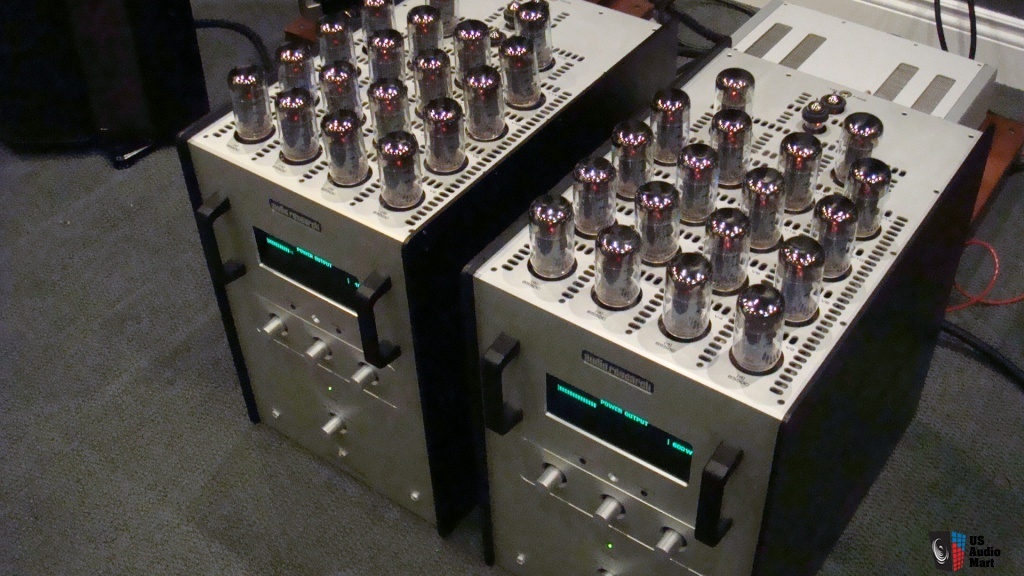
As in previous posts, to create materials, I relied on the opinions of Pult.ru experts, the publication of resources such as network54.com, soundandvision.com, and many others. Pricing information is drawn from materials and announcements on 2ndhandhifi.co.uk and similar publications. The publications in the audiophile press of the period under review were also analyzed, in particular, some issues of the magazines “SoundStage!”, “Stereophile”, “The Absolute Sound Magazine”, “Positive Feedback”.
In addition to the above, when choosing devices for the title of cult, the opinions of such comrades as Robert Green (Robert E. Greene) (not a writer - ed.), Harry Pierson, Jonathan Valin were taken into account. , as well as chronological and price data published by manufacturers.
It will be about one of the most controversial amplifiers of the end of the last century, which was developed by our compatriot, engineer Vladimir Lamm. Being an experienced engineer, Vladimir immigrated to the USA in 1987, where he started producing expensive Hi-End tube amplifiers. It should be noted that Lamm chose a blessed time for immigration, an interest in lamp technology in the west experienced another rise.
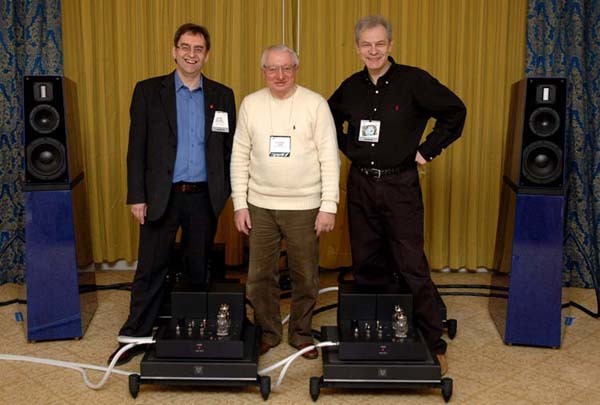
It was at the end of the 80s that the dream of audiophiles about uncompromising sound revived like a phoenix from the ashes, and the ex-Soviet engineer (a fierce advocate of the lack of environmental protection) found opportunities to implement ambitious plans. By the 90th, when the subject of these lines was created, the tube trend re-captured the heads of audiophiles, especially in the countries of the former Soviet Union, where lamps for many years were an attribute of reliable military equipment.
Soviet engineer Shushurin (he is in Lamm immigration), in 1997, he completed work on the creation of a tube mono amplifier Lamm ml 2, based on the Soviet triodes 6С33С (horned beasts). Interestingly, as a true traditionalist, Lamm preferred horn lamps, produced before 1985, noting that their quality had been much higher before that time.
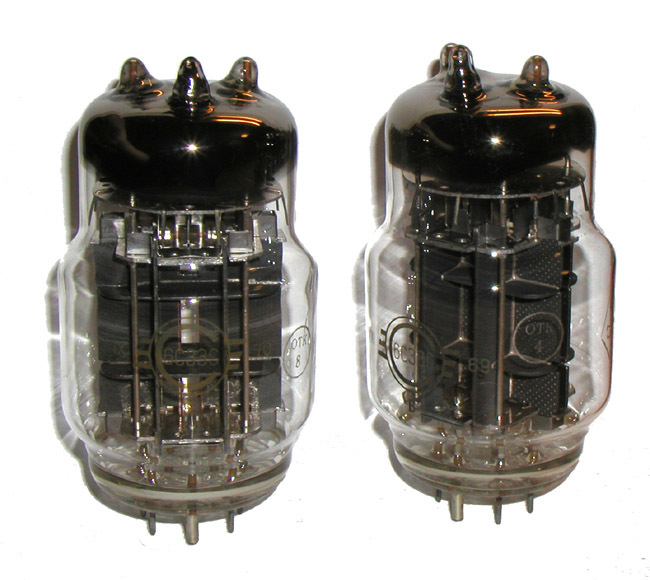
Not without the help of publications in a number of “omnipotent audiophile media”, this component is recognized as one of the best low-power amplifiers without EP. Experts praise the engineer and his unique product. But the trouble is that the harmonic coefficient in this miracle of lamp circuitry does not even meet HI-FI standards and is 3%, and the level of intermodulation distortion reaches 8%.
It is interesting that at the same time thecomrade Mr. Lamm himself is sincerely convinced that:
Proceeding from the developer's passage, the question arises: how can the device, which substantially distort the recorded sound, simply “disappear”? In my opinion, the answer is simple, you need to convince the listener that she can (should) do it. In almost every interview Lamm refers to the subjectivity in the perception of sound (and, in my opinion, he is largely right), but at the same time, to enhance the effects of subjective perception, he often mentions the number of audiophile publications that have approved his next development.
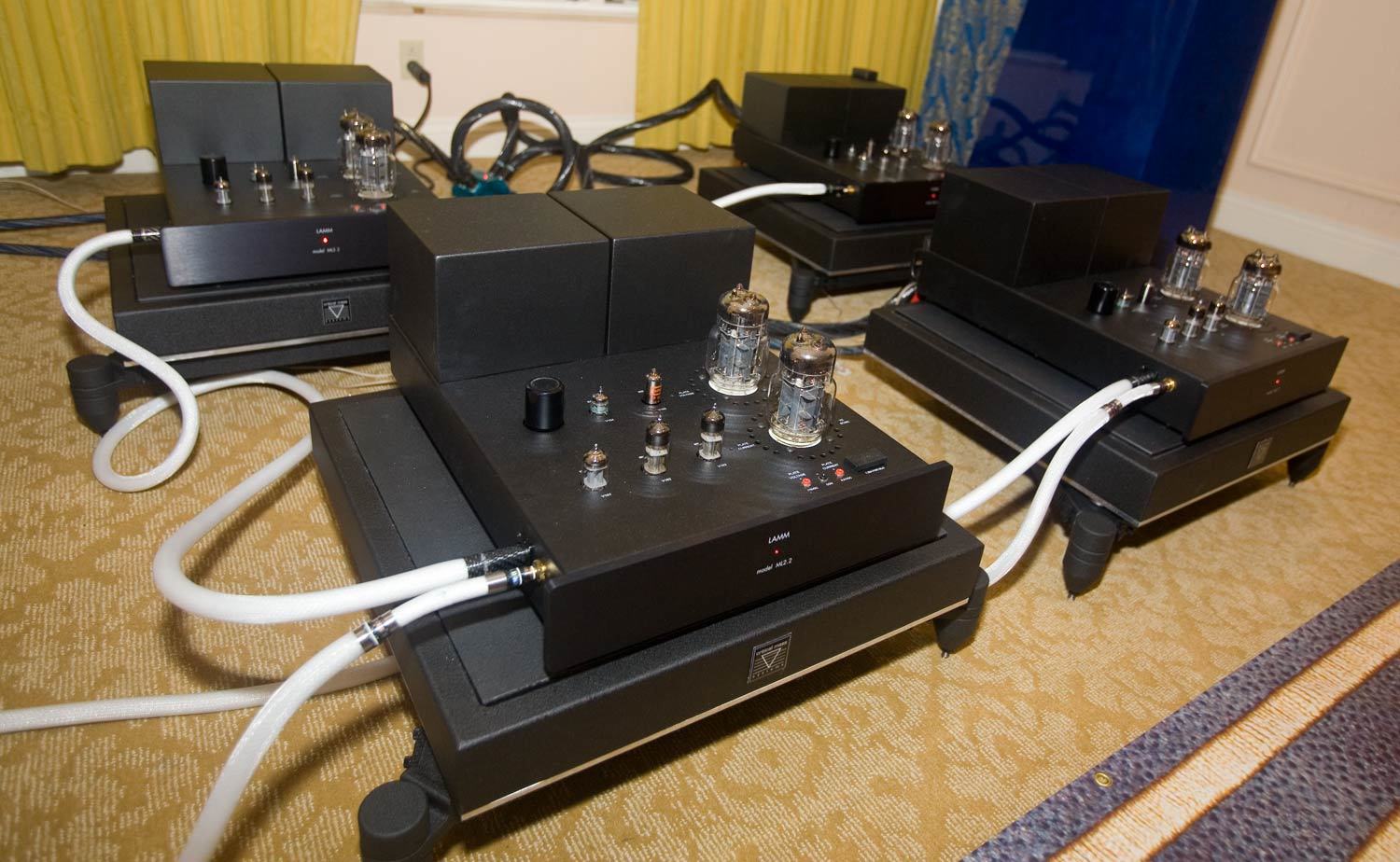
I happened to hear the magic amplifier already in the Lamm ml 2.1 version, the experts of the Consumer Electronics Show recognized this version as the best low-power amplifier. I did not experience the delight of the “divine sound” of this tube toy, but I want to note that, reading about the first ml2, I expected the worst.
Our experts also note that this legendary cult sample has the following significant disadvantages:
In addition, the Lamma amplifier has a really warm sound, in the literal sense of the word - the heat generated during its operation is so great that the device can be switched on in the winter as a heater. And all these pleasures of the warmest tube delight in all for ... drumbeat ...
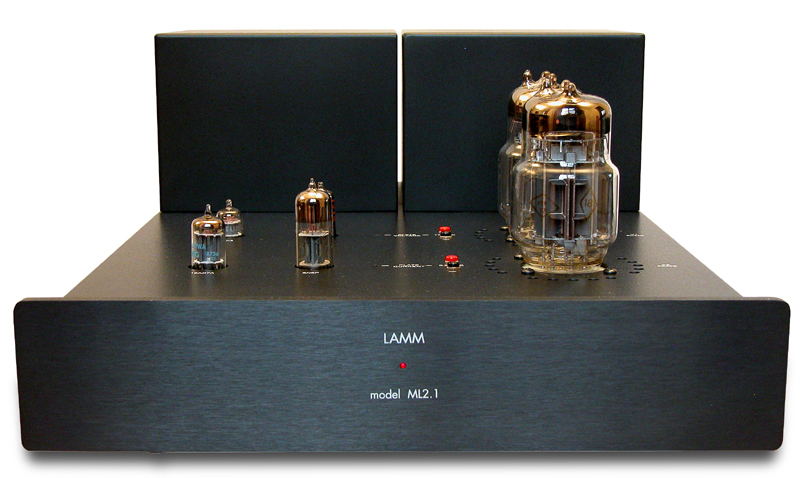
$ 35,990 (price is indicated for a couple of pieces, calculated by the gain of each of the stereo channels).
Specifications of the improved model Lamm ML2.2
At the first look at the amplifier, which I will describe below, I thought that the developers are increasing the number of lamps not for the sake of circuit design, but for the brutality of design. I was mistaken, not for the sake of design, because the RMS, the amplifier we are considering, is not any more than 600 W (PMPO is more than 2200 W). I'm afraid to guess why Johnson created the Hi-End amplifier with a power of more than half a kilowatt, but he managed to impress the experts of world audio magazines.
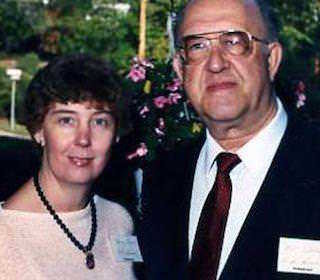
In particular, Robert Green from the pompous audiophile edition of The Absolute Sound Magazine noted that:
So, in 1995, the disinterested enthusiast of the uncompromising sound from Audio Research, William Zane Johnson, created, as Hi-end apologists say, one of the best high-power audio amplifiers Audio Research reference 610T. As befits the “tru heyndu”, the UMZCH was monophonic, so a pair of devices provided independent amplification of each channel (with a total RMS of 1200 W). The huge power of 600 W for this class of devices (with an output resistance of 4 Ohm, 8 Ohm or 16 Ohm) is provided by the output stages created on the basis of 16 6550C lamps. The amplifier is built on a push-pull, fully symmetrical scheme.
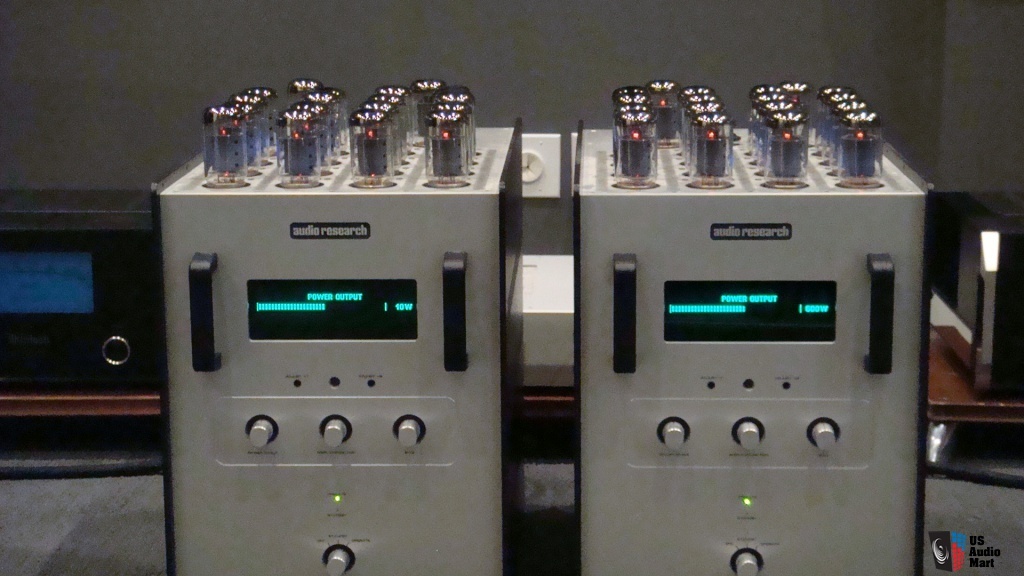
Lamps of a wasteful giant are designed for 2,000 hours of work, but, according to some authors, with a long load close to the limit, they rarely fail, much earlier.
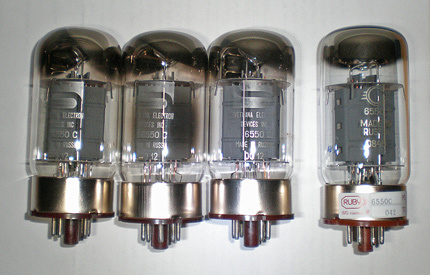
So, briefly about the characteristics:
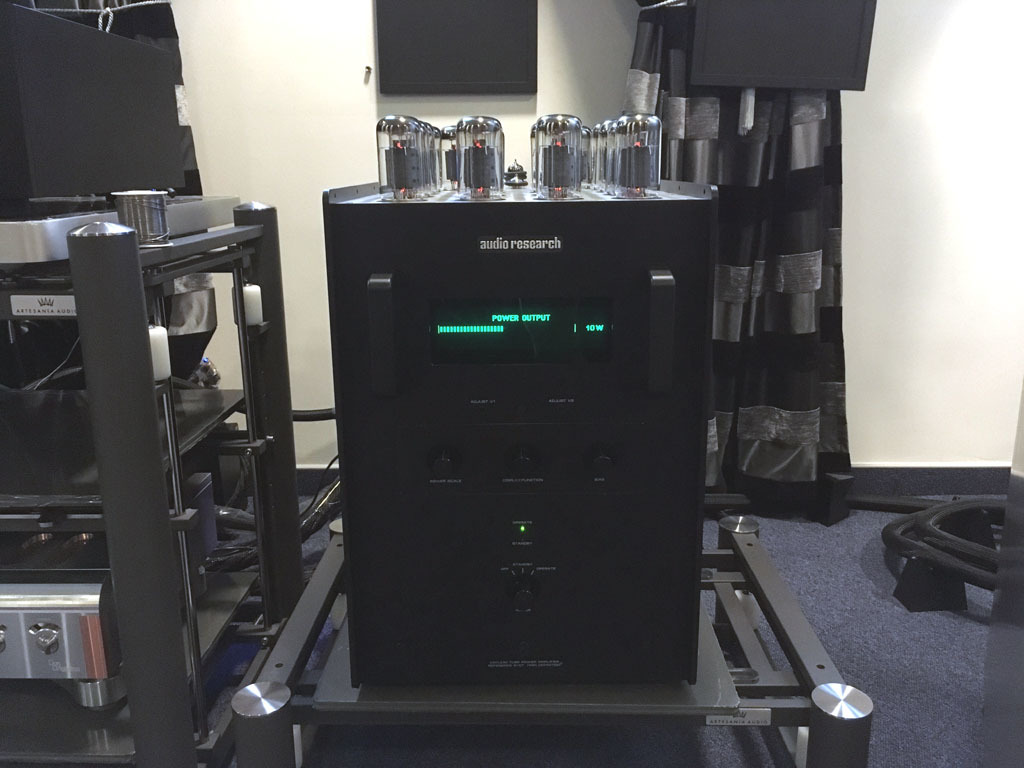
The construction of the three-unit chassis of the hulk, called the Tower (Tower), was equipped with a converter cooling system, i.e. completely devoid of coolers, and accordingly, the heat transfer from 16 tubes of the end can completely compete with household heating appliances. Input and output lamps are placed on the top of the tower, which, according to the creator, should be covered with a vented casing. However, the majority of labor lovers TLZ remove the casing in order tostick in the dark to delight the gaze of the light burning radio tubes.
Everything related to this amplifier, and other miracles from Comrade Johnson, I associate with the concept car for automotive exhibitions. They are also created to demonstrate the possibilities, but not to ride them.
NAD-3020 is the only component in this review that received the title of cult without the help of high-profile publications in the audio press and speculation about the aspirations of retrograde owners of gold ears. This UMZCH can not be called a masterpiece of three-dimensional design, it is simple and practical, and most importantly it sounds great.
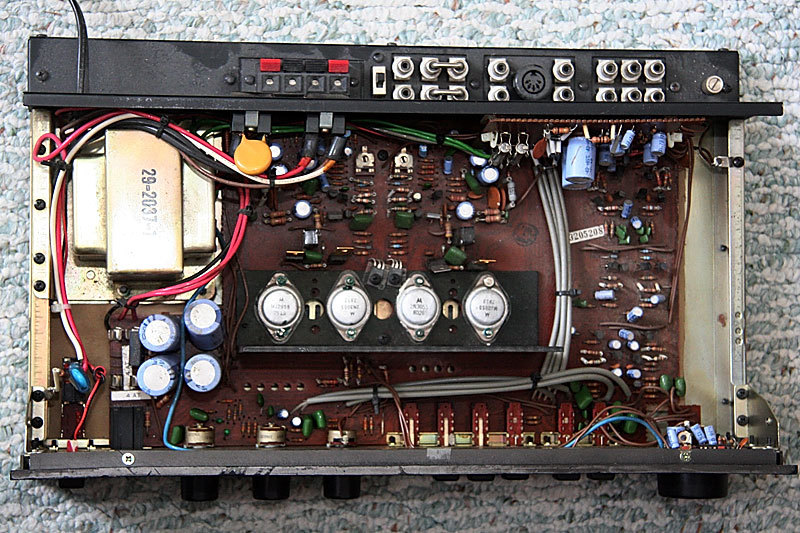
The integrated amplifier NAD 3020 appeared in 1979, and was designed under the guidance of one of the best engineers of amplifying technology in Europe, Bjorn Erik Edwardsen (Bjorn Erik Edvardsen). A talented innovator was able to create a unique UMZCH for its time, which surpassed almost all competing counterparts, and in some cases, competed with devices that were 5-6 times more expensive.
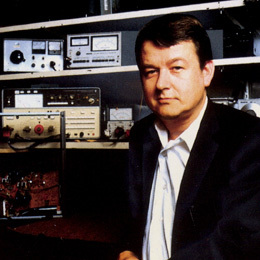
For more than 10 years, the NAD 3020 remained the benchmark of an integrated HI-FI amplifier, was updated and modernized many times, until the early 90s. This UMZCH practically destroyed the myth that expensive and short-lived lamps are the only alternative. The emergence of this product led to the fact that NAD was among the most successful global manufacturers of UMZCH in the 80s. There was no better selling Hi-FI class UMZCH in the world; the NAD 3220 sold more than 500,000 components.
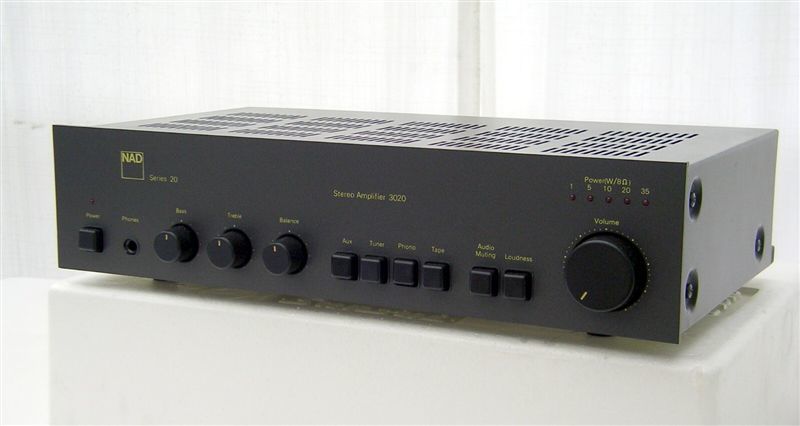
The reason for the popularity of this amplifier was the low cost, and accordingly, the optimal price / quality ratio, high efficiency and economy, high build quality, unattainable for other products in its price category characteristics:
And ... the price ... drum roll:
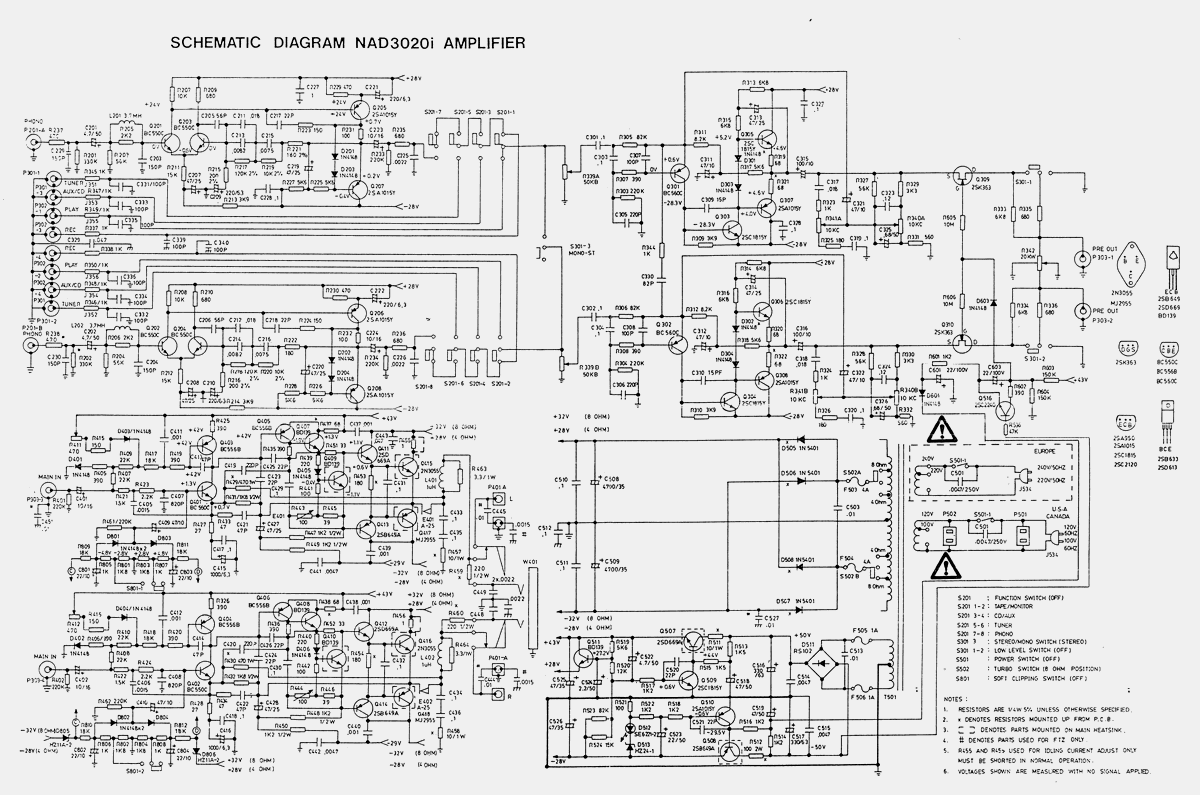
£ 79 (US $ 133) No, I did not forget to add zero, just so much! Taking into account inflation, today the price of this amplifier would be $ 410.
I deliberately finished this publication with the NAD 3220, so that the 80s and 90s would not remain for readers an extremely bleak and riddled with warm lamp marketing. Signed development left quite a few, if readers are not tired, we will continue the series, ready to announce at least one more material.

As in previous posts, to create materials, I relied on the opinions of Pult.ru experts, the publication of resources such as network54.com, soundandvision.com, and many others. Pricing information is drawn from materials and announcements on 2ndhandhifi.co.uk and similar publications. The publications in the audiophile press of the period under review were also analyzed, in particular, some issues of the magazines “SoundStage!”, “Stereophile”, “The Absolute Sound Magazine”, “Positive Feedback”.
In addition to the above, when choosing devices for the title of cult, the opinions of such comrades as Robert Green (Robert E. Greene) (not a writer - ed.), Harry Pierson, Jonathan Valin were taken into account. , as well as chronological and price data published by manufacturers.
The Sabbat of subjectivism, 18 watts, KNI 3%, Soviet lamps and tens of kilobaksov
It will be about one of the most controversial amplifiers of the end of the last century, which was developed by our compatriot, engineer Vladimir Lamm. Being an experienced engineer, Vladimir immigrated to the USA in 1987, where he started producing expensive Hi-End tube amplifiers. It should be noted that Lamm chose a blessed time for immigration, an interest in lamp technology in the west experienced another rise.

It was at the end of the 80s that the dream of audiophiles about uncompromising sound revived like a phoenix from the ashes, and the ex-Soviet engineer (a fierce advocate of the lack of environmental protection) found opportunities to implement ambitious plans. By the 90th, when the subject of these lines was created, the tube trend re-captured the heads of audiophiles, especially in the countries of the former Soviet Union, where lamps for many years were an attribute of reliable military equipment.
Soviet engineer Shushurin (he is in Lamm immigration), in 1997, he completed work on the creation of a tube mono amplifier Lamm ml 2, based on the Soviet triodes 6С33С (horned beasts). Interestingly, as a true traditionalist, Lamm preferred horn lamps, produced before 1985, noting that their quality had been much higher before that time.

Not without the help of publications in a number of “omnipotent audiophile media”, this component is recognized as one of the best low-power amplifiers without EP. Experts praise the engineer and his unique product. But the trouble is that the harmonic coefficient in this miracle of lamp circuitry does not even meet HI-FI standards and is 3%, and the level of intermodulation distortion reaches 8%.
It is interesting that at the same time the
“You only need to listen to music. The equipment should not worry you, it should disappear. But only the highest-quality equipment has the ability to fade. ”
Proceeding from the developer's passage, the question arises: how can the device, which substantially distort the recorded sound, simply “disappear”? In my opinion, the answer is simple, you need to convince the listener that she can (should) do it. In almost every interview Lamm refers to the subjectivity in the perception of sound (and, in my opinion, he is largely right), but at the same time, to enhance the effects of subjective perception, he often mentions the number of audiophile publications that have approved his next development.

I happened to hear the magic amplifier already in the Lamm ml 2.1 version, the experts of the Consumer Electronics Show recognized this version as the best low-power amplifier. I did not experience the delight of the “divine sound” of this tube toy, but I want to note that, reading about the first ml2, I expected the worst.
Our experts also note that this legendary cult sample has the following significant disadvantages:
- extremely low temperature stability of parameters
- input cascade with common cathode too high
- unacceptable even for the hi-fi class nonlinearity component in all modes of allowable stress
- high grid current does not allow the use of A2 mode
- low reliability of the used type of lamp terminator at close to the maximum allowable values of voltages and powers.
In addition, the Lamma amplifier has a really warm sound, in the literal sense of the word - the heat generated during its operation is so great that the device can be switched on in the winter as a heater. And all these pleasures of the warmest tube delight in all for ... drumbeat ...

$ 35,990 (price is indicated for a couple of pieces, calculated by the gain of each of the stereo channels).
Specifications of the improved model Lamm ML2.2
Rated output power: 18 W / 16 Ohm (18 W / 8 Ohm, 18 W / 4 Ohm)
Maximum power: 21 W / 16 Ohm (20 W / 8 Ohm, 20 W / 4 Ohm)
Nominal output. Voltage:
24 V / 16 Ohm @ 36 W (peak)
17 V / 8 Ohm @ 36 W (peak)
12 V / 4 Ohm @ 36 W (peak)
Frequency range: 20 Hz - 20 kHz (-0.3 dB @ 18 W / 16 Ohm)
(+0, -3 dB) 3 Hz - 80 kHz (-3 dB @ 1 W / 16 Ohm)
The slew rate of the out. signal (10 kHz square wave with a scale 48, 16 ohm) 15 V / microsecond
Intermodulation distortion: not more than 8%
Inputs: 1 psevdobalansny non-inverting XLR / 1 RCA unbalanced non-inverting
input. sensitivity: 0.85 V RMS @ 18 W / 16, 8, 4 Ohm
Input resistance: 41 kΩ (470 pF)
Output impedance: 1.68 ohm @ 1 kHz (o. 16 ohm) / 0.84 ohm @ 1 kHz (o. 8 ohm) / 0.42 ohm @ 1 kHz (o. 4 ohm)
Damping factor: 9, 5 @ 1 kHz / 16, 8, 4 Ohm
9.5 ± 0.7 @ 30 Hz - 20 kHz / 16, 8, 4 Ohm
Weight, kg: 36.8
Johnson's Multi-Monster Monsters
At the first look at the amplifier, which I will describe below, I thought that the developers are increasing the number of lamps not for the sake of circuit design, but for the brutality of design. I was mistaken, not for the sake of design, because the RMS, the amplifier we are considering, is not any more than 600 W (PMPO is more than 2200 W). I'm afraid to guess why Johnson created the Hi-End amplifier with a power of more than half a kilowatt, but he managed to impress the experts of world audio magazines.

In particular, Robert Green from the pompous audiophile edition of The Absolute Sound Magazine noted that:
“Audio Research Reference 610T immediately set a new standard in high-quality music playback.”
So, in 1995, the disinterested enthusiast of the uncompromising sound from Audio Research, William Zane Johnson, created, as Hi-end apologists say, one of the best high-power audio amplifiers Audio Research reference 610T. As befits the “tru heyndu”, the UMZCH was monophonic, so a pair of devices provided independent amplification of each channel (with a total RMS of 1200 W). The huge power of 600 W for this class of devices (with an output resistance of 4 Ohm, 8 Ohm or 16 Ohm) is provided by the output stages created on the basis of 16 6550C lamps. The amplifier is built on a push-pull, fully symmetrical scheme.

Lamps of a wasteful giant are designed for 2,000 hours of work, but, according to some authors, with a long load close to the limit, they rarely fail, much earlier.

So, briefly about the characteristics:
RMS: 600 W / channel
Frequency Range: (-3 dB points) 15 Hz to 150 kHz.
Input sensitivity: 4.2V (24dB gain at 8 ohms)
Input impedance: 200 KΩ
Output impedance 4, 8, 16 Ohm.
Total negative feedback: 13dB
Damping: approximately 16
THD: below 0.1%
IMD: below 0.5%
Lamps: (8 pairs) 6550C matched output power; (1) 6550C regulator; (1) preamplifier 6H30 regulator; (2) 6550C driver; (2) 6NIP input, (1) 6H30 in series.
Weight: 225 kg per pair.
Price per pair: $ 40,000

The construction of the three-unit chassis of the hulk, called the Tower (Tower), was equipped with a converter cooling system, i.e. completely devoid of coolers, and accordingly, the heat transfer from 16 tubes of the end can completely compete with household heating appliances. Input and output lamps are placed on the top of the tower, which, according to the creator, should be covered with a vented casing. However, the majority of labor lovers TLZ remove the casing in order to
Everything related to this amplifier, and other miracles from Comrade Johnson, I associate with the concept car for automotive exhibitions. They are also created to demonstrate the possibilities, but not to ride them.
Integral Killer TLZ - NAD-3020
NAD-3020 is the only component in this review that received the title of cult without the help of high-profile publications in the audio press and speculation about the aspirations of retrograde owners of gold ears. This UMZCH can not be called a masterpiece of three-dimensional design, it is simple and practical, and most importantly it sounds great.

The integrated amplifier NAD 3020 appeared in 1979, and was designed under the guidance of one of the best engineers of amplifying technology in Europe, Bjorn Erik Edwardsen (Bjorn Erik Edvardsen). A talented innovator was able to create a unique UMZCH for its time, which surpassed almost all competing counterparts, and in some cases, competed with devices that were 5-6 times more expensive.

For more than 10 years, the NAD 3020 remained the benchmark of an integrated HI-FI amplifier, was updated and modernized many times, until the early 90s. This UMZCH practically destroyed the myth that expensive and short-lived lamps are the only alternative. The emergence of this product led to the fact that NAD was among the most successful global manufacturers of UMZCH in the 80s. There was no better selling Hi-FI class UMZCH in the world; the NAD 3220 sold more than 500,000 components.

The reason for the popularity of this amplifier was the low cost, and accordingly, the optimal price / quality ratio, high efficiency and economy, high build quality, unattainable for other products in its price category characteristics:
Rated power: 28 W per channel with a load of 8 Ohms
Signal-to-noise ratio:> 75 dB (1 W)
Channel separation:> 60 dB
Frequency range: 20 Hz ~ 20 kHz at ± 5 dB
Infrasound filter: 24 dB / octave at - 3 dB, at 15 Hz
Ultrasonic filter: 12 dB / octave at -3 dB, at 35 kHz
Nominal distortion: 0.02% (from 20 Hz to 20 kHz)
Input impedance: 47 kΩ
Input sensitivity: 2.5 mV, 20 Watts at 1 kHz
IHF dynamic range: +3 dB at 8 ohms
IHF dynamic power: 40 watts per channel with a load of 8 ohms
power consumption: up to 70 watts (maximum)
Weight: 5.3 kg
And ... the price ... drum roll:

£ 79 (US $ 133) No, I did not forget to add zero, just so much! Taking into account inflation, today the price of this amplifier would be $ 410.
I deliberately finished this publication with the NAD 3220, so that the 80s and 90s would not remain for readers an extremely bleak and riddled with warm lamp marketing. Signed development left quite a few, if readers are not tired, we will continue the series, ready to announce at least one more material.
